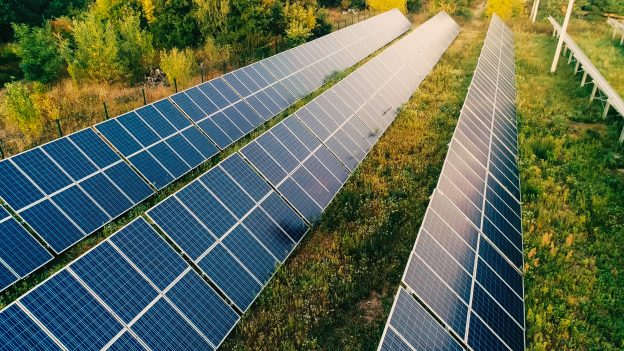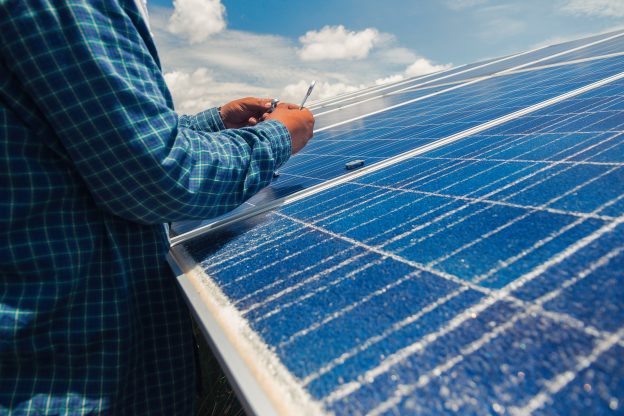On June 5, 2025, U.S. residential solar giant Sunnova announced it would lay off 55% of its workforce (around 718 employees) in a drastic effort to rescue its debt-ridden operations. This marks the company's second round of mass layoffs this year, following a 15% staff cut in February, as it struggles to survive. However, the market largely views this move as too little, too late—in March, the company warned of "substantial doubt" about its ability to continue operating, and in May, its subsidiary Sunnova TEP Developer LLC filed for bankruptcy protection, with estimated assets and liabilities ranging from $100 million to $500 million.
The Final Blow: $2.92 Billion Federal Loan Guarantee Revoked
The collapse of Sunnova was sealed when the Trump administration revoked a $2.92 billion federal loan guarantee on May 28, which had been granted in April 2023 under the Biden administration. The guarantee was intended to finance 100,000 rooftop solar systems, primarily for low-income households. However, as interest rates surged, financing costs rose sharply, putting immense pressure on the residential solar sector. With Trump's return to office and his renewed push for traditional oil and gas industries, green energy subsidies were among the first to be cut. The cancellation of this guarantee cut off Sunnova’s last lifeline, and by the end of May, the company warned that it might not be able to continue operating.
While the revocation of the federal loan guarantee triggered the mass layoffs, Sunnova's flawed business model and high leverage were the deeper causes of its downfall.
Flawed Business Model: High-Leverage Capital Game
At first glance, Sunnova appeared to be a residential solar service provider. In reality, it operated more like a capital-driven financing machine. The company attracted customers with “free installation + 20-year power purchase agreements (PPAs)”, then bundled these contracts into asset-backed securities (ABS) to raise funds—creating a cycle of “financing–expansion–refinancing.”
By 2025, Sunnova's outstanding ABS had ballooned to $5.8 billion, accounting for nearly 70% of its total debt, while its annual revenue was just $840 million. After the Fed’s aggressive rate hikes, low-yield solar ABS lost their appeal, choking off financing. In 2024, interest payments surged to 25% of revenue, and the interest rate on its $400 million bond maturing in 2026 jumped from 5.75% to 14%, leading to a default in April—which ultimately ignited the debt crisis.
The company did attempt multiple cost-cutting measures: it laid off 300 employees in February, shifted focus to high-margin customers, abandoned community solar programs (saving $35 million annually), auctioned off $17 million worth of energy storage hardware in April, and in March, borrowed $185 million at 15% interest from KKR, secured by future ABS cash flows. Yet, facing $8.5 billion in total debt and a 2024 net loss of $448 million, these efforts proved inadequate.
Founder John Berger resigned in March, Fitch downgraded the company’s credit rating to CCC- (imminent default), and its bonds plunged to 35% of face value.
A Broader Crisis in U.S. Residential Solar
Sunnova’s collapse is not an isolated event—it reflects a systemic crisis in the U.S. residential solar industry. On one hand, policy shifts and incentive rollbacks have triggered a sharp drop in rooftop solar installations. For example, California, once the leader in U.S. rooftop solar (contributing nearly 40% of national installations), saw demand plummet after the Net Energy Metering (NEM) policy was repealed, eliminating financial incentives for selling excess power back to the grid. Since then, new rooftop solar installations have nearly ground to a halt.
On the other hand, high interest rates have dampened homeowner willingness to finance solar systems, while grid interconnection delays and rising module costs (due to import tariffs) have pushed the industry into a “high-cost, slow-return” quagmire.
The ripple effects are already visible: SunPower filed for bankruptcy in August 2024, while inverter giants like SolarEdge and Enphase have implemented large-scale layoffs. Hundreds of solar companies across the U.S. have gone under.
Sunnova’s downfall exposes the deeper fault lines in the American solar boom. Much of the industry’s recent growth was built on government subsidies, particularly those from the Inflation Reduction Act (IRA). Companies grew reliant on monetizing 30% tax credits through transfer funds, neglecting sustainable profitability. The ABS financing model fueled rapid expansion during the low-rate era, but quickly turned into a noose when rates reversed. Meanwhile, political turnover has led to dramatic shifts in energy policy, leaving companies with no stable long-term outlook.
Source:https://mp.weixin.qq.com/s/NVAg7mNOIyF0e0LPfIx3qQ







